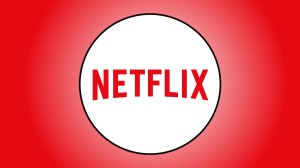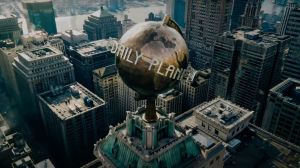The growth and future of Dungeons & Dragons’ player base is better defined by the rise of Critical Role than a fixation on past campaign settings and projects. Earlier this year, Tracy Hickman and Margaret Weis announced a new trilogy of Dragonlance novels, marking the revitalization of one of Dungeons & Dragons’ most popular worlds. While the Dragonlance fans celebrated the news, Hickman seemingly framed the announcement as a pushback against modern D&D trends, sharing a meme on Facebook that unfavorably framed the characters of Critical Role compared to the “tradition” of Dragonlance. He eventually removed his post after clarifying that he found the meme amusing and that “he likes both” Dragonlance and Critical Role, but his post still drew heavy criticism from fans both old and new.
Videos by ComicBook.com
Putting aside the most problematic aspects of the meme (“Reject Modernity, Embrace Tradition” stems from Umberto Eco’s Eternal Fascism, which uses both phrases as criteria for a fascist regime), it’s still disappointing to see Hickman share an attack on a popular D&D franchise. In many ways, Critical Role mirrors the path that Dragonlance took towards stardom. Both started off as home games and grew to become extremely popular franchises sanctioned by the owners of D&D, and both franchises thrive on inter-character drama more than strict adherence to the plot. Both franchises also have passionate fanbases, which have contributed greatly to their wider relevance outside of the world of tabletop roleplaying games. However, the meme does unwittingly point out how representative Critical Role is to Dungeons & Dragons and its continued relevance in modern society.
The meme shared by Hickman directly compares the characters of Critical Role to the protagonists of the Dragonlance series. The Dragonlance characters are a mix of “traditional” fantasy races that include half-elves, humans, elves, dwarves, and a kender, a fantasy race unique to the Dragonlance series. These were and remain standard character options in Dungeons & Dragons. However, one of the major shifts to occur in the game between the debut of Dragonlance and today is the embrace of non-traditional character races. That’s reflected in the cast of Critical Role, whose characters include a tiefling, a half-orc, an aasimar, a halfling who until recently was a goblin, and a firbolg. All of those races have roots in older versions of the game, but have become increasingly more common and popular for players to use in recent years. While humans are still a popular Dungeons & Dragons choice, you’ll see just as many bullywugs, tortle, and tabaxi when sitting down at a D&D table.
More importantly, the characters of Critical Role aren’t defined by their race nor do they conform to popular fantasy tropes. While the characters of Dragonlance mostly conform to the traditional heroic roles (save for the immensely popular anti-hero Raistlin), the characters of Critical Role are unique and informed mostly by the choices of their players rather than their class, background, or fantasy race. While Critical Role shouldn’t be seen as an absolute or standard for a modern D&D game, it does better reflect what you see at more tables than a thick fantasy novel featuring homogeneous characters.
Of course, there’s not really a competition between Dragonlance and Critical Role. Tabletop gaming is certainly big enough for both franchises, and there’s no reason why both worlds can’t co-exist. But it’s important to remember why the makers of Dungeons & Dragons have embraced Critical Role so wholeheartedly – the show represents a more inclusive and open take on both fantasy and tabletop gaming, one defined by player choice and shared storytelling limited only by the imagination of the players rather than adherence to tradition and reliance on nostalgia and the past.









